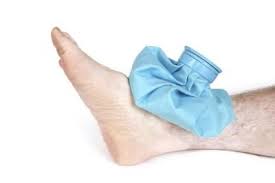 Which is better, heat or ice? Patients ask me that all the time. And my answer is: it depends. Both are good, but good for different things. In this article, I will focus on cryotherapy or “cold”/ice therapy. This can include ice packs, whirlpools, cooling sprays, or the ever popular frozen peas.
Which is better, heat or ice? Patients ask me that all the time. And my answer is: it depends. Both are good, but good for different things. In this article, I will focus on cryotherapy or “cold”/ice therapy. This can include ice packs, whirlpools, cooling sprays, or the ever popular frozen peas.
First of all, what does ice do to your body? In general, The metabolic activity of the tissue decreases, and nerve conduction becomes slower. It can reduce muscle spasms and guarding (when your muscles are tense from having pain). Basically, everything becomes slower with ice. How can that help someone with an injury?
Ice is great for acute (recent) injuries. It slows down the inflammatory response and decreases swelling or edema to the injured area. Many medical professionals recommend using ice within the first couple days or even right after your injury for this reason. It can also reduce muscle spasms, slow down bleeding, and relieve pain.
However, ice should be avoided in certain cases, which are listed below.
Precautions of using ice
- Avoid use if you have impaired sensation.
- Do not use ice if you have compromised circulation, peripheral vascular disease, hypertension, or a past history of frostbite.
- Avoid prolonged application (never more than 1 hour). Monitor your skin for signs of irritation.
As mentioned above, ice is great for certain injuries but not all. Please ask your therapist if ice is okay to use. As with all therapeutic modalities, cryotherapy is best used in conjunction with a supervised therapy plan with either your occupational or physical therapist.
Source
Bracciano, A. G. (2008). Physical Agent Modalities: Theory and Application for the Occupational Therapist (2nd ed.). Thorofare, NJ: SLACK Incorporated.

